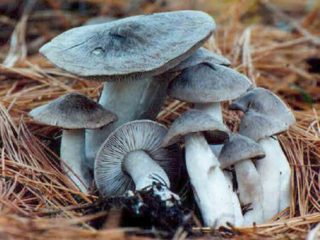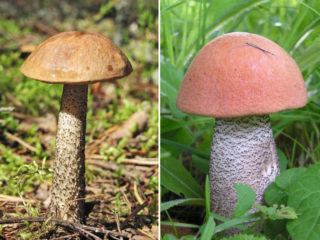Content
Omphalina umbellata is a representative of the Tricholomovaceae or Rowaceae family, genus Omphalina. It has a second name - Lichenomphaly Umbrella. This species demonstrates an example of successful cohabitation of algae with basidiosporous fungi.
Description of Omphalina Umbrella
It belongs to the group of lichens, but unlike the usual lichenized mushrooms, the fruiting body of Omphalina umbellata is presented in the form of a cap and a stalk. The lichenized part is located on the same substrate as the specimen itself, in the form of a thallus, which contains unicellular algae of the genus Coccomyxa.
The color of the flesh of this species matches the cap and varies from light yellow to greenish-brown. The spores are ellipsoid, thin-walled, smooth and colorless, measuring 7-8 x 6-7 microns. Spore powder is white. It has an unexpressed smell and taste.
Description of the cap
A young specimen is distinguished by a bell-shaped cap; with age it becomes prostrate with a concave center. Omphalina umbellata is characterized by a very small cap. Its diameter varies from 0.8 to 1.5 cm. As a rule, the edges are thin, ribbed and furrowed. Most often it is painted in white-yellowish or olive-brown tones. On the inside of the cap there are sparse, pale yellow plates.
The thallus is Botrydina type, consisting of dark green spherical granules, the size of which reaches about 0.3 mm, forming a dense mat on the substrate.
Description of the leg
Omphalina umbellata has a cylindrical and rather short stalk, the length of which reaches no more than 2 cm and a thickness of about 1-2 mm. It is painted in a yellow-brown shade, gradually turning into a lighter shade towards its lower part. The surface is smooth and has white pubescence at the base.
Where and how does it grow
The optimal growing time is from July to October. Prefers coniferous and mixed forests. Lichenomphaly umbellifera most often grows on rotten stumps, tree roots, old dead wood, as well as on living and dying mosses. Mushrooms can grow either singly or in small groups. Despite the fact that this species is considered quite rare, Omphalina umbellata can be found in Russia.Thus, this variety was seen in the Urals, the North Caucasus, Siberia, the Far East, as well as in the northern and middle zone of the European part.
Is the mushroom edible or not?
There is quite a bit of information about the edibility of Omphalina umbellata. However, there is information that this specimen has no culinary value and is therefore inedible.
Doubles and their differences
Omphalina umbellata has external similarities with the following species:
- Lichenomphaly alpine belongs to the category of inedible mushrooms, differs from Omphalina umbellata by small fruiting bodies of lemon-yellow color.
- Omphalina vitreous - inedible mushroom. Prefers to live in the same areas as the species in question. However, the double can be distinguished by the larger size of the fruiting body and the red-brown color of the cap.
Conclusion
Omphalina umbellata is a lichen that is a symbiosis of green algae (phycobiont) and a fungus (mycobiont). It is not common, but this specimen can be found in mixed and coniferous forests of Russia. Considered inedible.













